Located in the heart of Texas, Austin is a dynamic urban center bursting with accommodations, restaurants and attractions. The self-described Music Capital of the World boasts a vibrant music and arts community and a wealth of entertainment venues and related attractions. South by Southwest, one of the largest music festivals in the United States, is held in Austin each spring and welcomes musicians and afficianados from around the globe to take part in this celebration.
In addition to numerous entertainment districts within the city, visitors can take in live performances at the UT Performing Arts Center, ACL Live at the Moody Theatre, Frank Erwin Center and Mary Moody Northen Theatre at St. Edward’s University. For those traveling with children, must-see destinations are the Austin Children’s Museum, the Austin Zoo and Zilker Metropolitan Park, a multi-purpose recreational area that also features the Austin Nature and Science Center, the Zilker Botanical Gardens and the Umlauf Sculpture Garden and Museum.
History
Austin grew out of the early days of the Republic of Texas. The area was once home to many hunting tribes, and was a Franciscan mission in the early 1700s. In 1838 wilderness adventurer Jacob Harrell started a settlement he called Waterloo, on the banks of the Colorado River. It was in that year that Harrell took his politician friend Mirabeau B. Lamar hunting in the surrounding hills. Soon Lamar would become the president of the young republic. Having fallen in love with the area, Lamar set up Waterloo as the capitol, despite the congressional commission’s view that it was too dangerous a place for such a distinction.
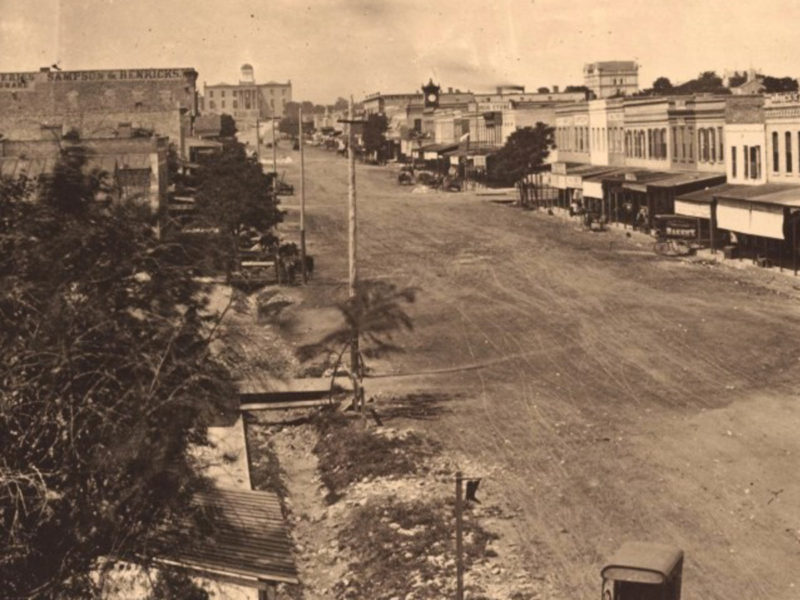
In 1839, planning and development for the new seat of power began. Among the first changes made, Waterloo was given the new name of Austin in honor of Stephen F. Austin, considered the founder of Texas. Austin would not remain the capitol for long, however, and in 1842 the constant threat of attack from Mexico led Texas president Sam Houston to move the national archives to a safer place. Houston was chosen and became home to both the archives and the capital.
Then, in 1844, Anson Jones won the presidency. Jones called a constitutional convention in 1845 to settle the issue of Texas being annexed by the USA. Texas became a state and Austin was once again made its capitol. Five years would pass before the issue would come around again. In 1850 voters would decide once and for all where the seat of government would be. The city of Austin put a lot of effort into winning that decision.
Through the 1850s Austin also saw a lot of construction. The city was now protected by the US Army, and the population began to grow. Many of the buildings erected during this time still stand, some are even in use to this day. Growth slowed by 1861, when Austin joined the Confederacy. By 1865 the Union Army was firmly established as the official peace keepers for the Austin area.
The 1870s brought a new life to the city. The first rail line was developed in 1871, connecting Austin to the growing United States. In 1876 Austin began plans to build the University of Texas with the intention of making it the foremost center for higher education in the state. It would take approximately 7 years to complete and in 1883 the first 200 students passed through its doors to eight waiting professors.
![[Congress Avenue looking north from 7th Street] Austin TX 1942](https://www.lucidcrew.com/wp-content/uploads/2020/02/c00486.jpg)
Discovering Oil Changed Austins Future
The next major turning point in Austin’s history came in the form of black gold. The University uncovered vast oil pools in 1923, and this discovery greatly influenced the direction of the city. Tremendous development and a new faculty earned the young university a place among the finest schools in the nation. Austin quickly became the meeting place for brilliant young minds, and the university’s discovery has been far reaching. Scientists from the university founded Tracor, the first high tech company in the city. Through the 1960s many more high-tech firms such as IBM, Texas Instruments and the immensely successful Dell Computer Corporation made their home in Austin, turning it into an epicenter for technological discovery.
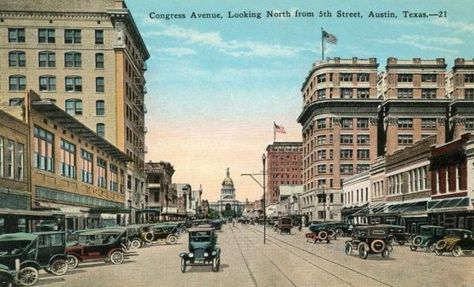
The later half of the 20th century looked bright for the capital. A first class university and the comparatively higher wages found within the growing technology industry attracted many new residents. Country music superstar Willie Nelson moved to the fastest growing city in Texas from Nashville, TN in the early 1970s, reviving a music scene that began to fade after the 1960s counter culture revolution dropped from public attention. The resurgence mirrored the bustling entertainment scene of the previous decade, a scene that gave the world such luminaries as Janis Joplin. Clubs opened in unoccupied buildings throughout the city, further bolstering nightlife and the economy. The city enjoyed a new vitality until the oil and financial industry crashed in the 1980s. The once booming real estate market took heavy losses, and many office buildings and high rises were vacant into the 1990s.
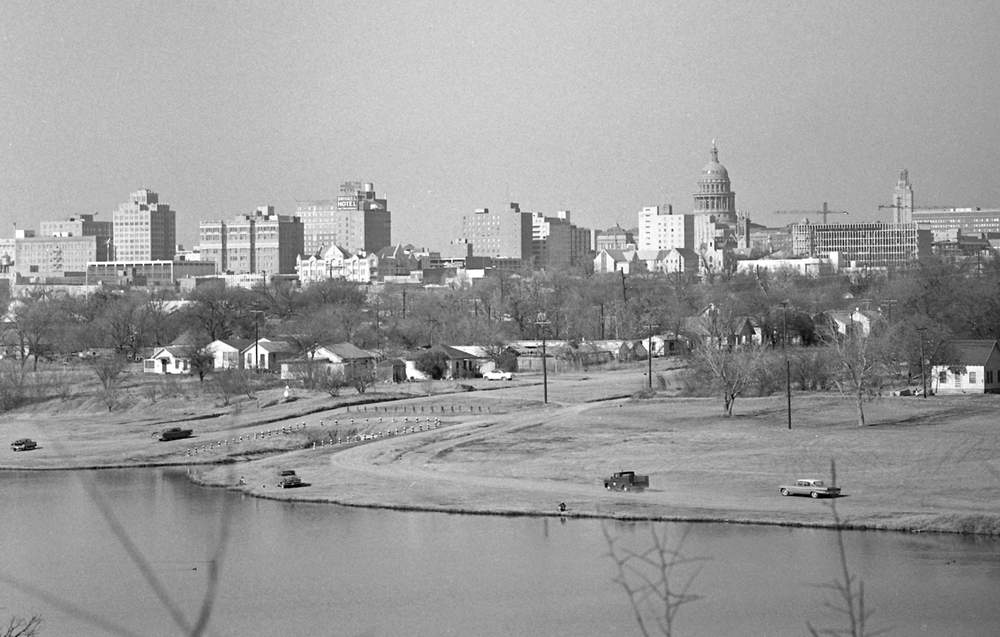
In 2000, the city decided to turn the six empty airplane hangars of the former Robert Mueler airport into Austin Studios, a film and multimedia studio, complete with set construction and sound studios. Austin has a long history with American film, and has been the location for movies starring such entertainment icons as Burt Reynolds, Dolly Parton, Meg Ryan, John Travolta, Denzel Washington, Natalie Portman and Rene Zellweger.
Climate
Spring is the rainy season, especially later spring. Temperatures are fairly mild, and the city is vibrant. Summers can be humid due to the spring rains, often reaching the low 100s Fahrenheit (high 30s Celsius). Temperatures drop considerably through the fall and winter settles in the low 60s Fahrenheit (around 15 º Celsius). The late fall and early winter are known as flu season, and travelers headed to Austin during this time are advised to be sure their shots are up to date.
Transportation
The I-35 runs right through Austin, connecting with Dallas in the north and San Antonio (the closer of the two) in the south. The I-35 also passes close to the Austin-Bergstrom International Airport, which is found just south of downtown. Every year more than 7 million travelers pass through the gates of the former Air Force Base, traveling to and from destinations around North America.
From the airport, the I-35 runs directly into downtown Austin. Parking in the downtown is very limited, but there is no light-rail system running through the city so visitors who decide to drive downtown be sure to carry ample change for the meters. Traffic in the city center has been described as “out-of-control”, so visitors may want to consider taking a taxi or city bus to get around. Fortunately, the city has developed an effective public transportation system. The bus routes are extensive, and there is a free downtown trolley.
If you are a bit more adventurous, cycling is a great way to get around the city. Austin is very accommodating to cyclists.
Sights and Attractions
Austin has many wonders for its visitors. The State Capitol, in downtown Austin, is surely one of the most impressive sights in the city. At 300 feet, the domed building is a centerpiece of the Austin skyline. It helps that this remarkable structure is not surrounded by the many towering skyscrapers that grace downtown, and it makes quite an impression when viewed against a mountain backdrop from the lake. Everything seems to be Texas sized, from the chandeliers to the doors.
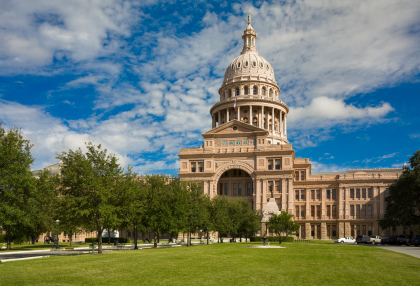
Austin loves its architecture, and hired world-renowned architect Richard Gluckman, creator of the Guggenheim Museum in Berlin, to envision the new Austin Museum of Art. Museums are a favorite among residents here, so the 65 million dollar expense was well worth it. The 145,000 square foot museum has brought new life to the already substantial Austin art community. No less than 12 galleries, a cafe, a film theater and educational programs are available, as this state of the art museum also doubles as an art school. Visitors can’t miss the museum, just look for the large, translucent glass wall that is used as a backdrop for projecting video on a large scale.
Other interesting architecture can be found around town. Sights like postmodern Avante Plaza office building or the Moonlight Towers are common. There are actually 17 towers, which light up the night sky, burning 6,400 watts of power. The oldest lighting system in the country, built in 1895, these historic attractions are particularly grand during the Christmas season, when festive lights are strung up the guy wires that support them.
Another experience not to be missed is presented by the Texas State History Museum. The museum details the history of the state, and houses the 1st IMAX theater in Austin. The 400 seat IMAX theater shows both 2-D and 3-D films.
Austin is a great city to have fun in. The self proclaimed “live music capitol of the world” offers something for all tastes along the famed Sixth Street, where the best performances can be found. Also on Sixth Street is the popular O’Shucks Tamales, known to locals as the Hot Sauce Museum. Hundreds of sauces, in varying strengths, can be sampled along with salsas and marinades. Visitors who like their food with kick should not miss O’Shucks Tamales. There are more restaurants per capita than any other city in the US, so visitors are guaranteed to find something appealing.
There are also more movie screens per capita here than anywhere else in America, so it is not surprising that the annual Austin Film Festival is so popular with locals and tourists alike. The name is a bit misleading, as the festival is really more of a competition. Still, films from around the world are presented during the summer, and many people behind the films can be seen attending. Entertainers like Lyle Lovett, Quentin Tarentino and Sandra Bullock have made appearances. Writers, directors and producers also attend, and are often on the celebrity panel during seminars and conferences.
Also of interest is South Congress Avenue, known to locals as SoCo. SoCo is the place to find nightclubs for drinking and dancing, hip galleries and retro boutiques, fun shopping and neat things to take home, much like the shopping of Sixth Street. As can be expected, South Congress Avenue has many restaurants to feed hungry and weary shoppers.
The Highland Lakes region is one of the more popular places for leisure recreation in the Austin area. This chain of lakes grew out of the dam projects of the early 1900s, and are especially well liked during Austin’s mild winters. Swimming, scuba diving, boating and water-skiing rate highly among the favorite activities in this scenic paradise. The lakes are also a big draw for hikers and campers, and backcountry guides are readily available to show new visitors the beauty of the Austin area. Another exciting opportunity for the out doorsy type is found at Barton Springs. Every day 27 million gallons of spring water pour into the pool for a clean and refreshing dip.
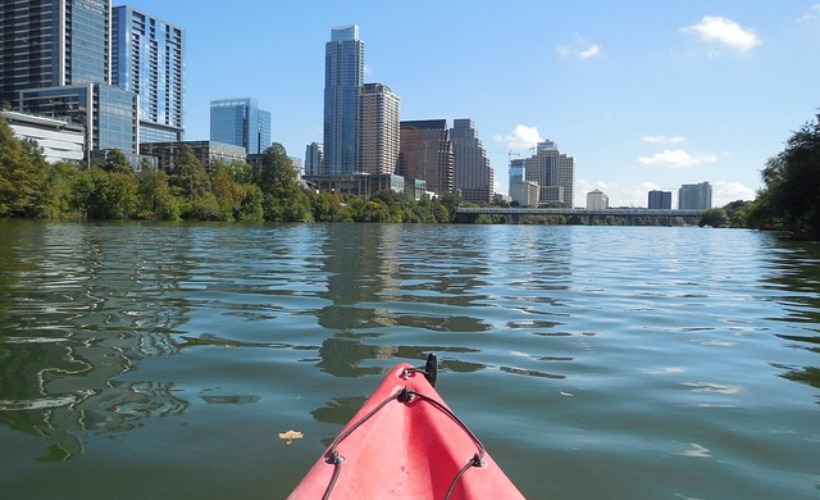
And of course, visitors can’t experience Austin and the great out doors without travelling to the beautiful Hill Country where it is found. Here visitors can experience the history of Texas and explore the pristine natural beauty. Sightseers also enjoy the Lyndon B. Johnson National Historical Park, honoring his life and service to his country, and the National Wildflower Research Center, dedicated to the research and preservation of America’s indigenous plant life.
Perhaps most surprisingly, Austin is home to the largest colony of bats in any city anywhere in the world. Hundreds of thousands of bats are known to make their home in the shady places under the Congress Avenue Bridge crossing Town Lake. Each night through the summer the sky is filled with over one million bats, a truly impressive sight.
Accommodations
As can be expected from the capital of any major state, accommodations are abundant in Austin. Hotels range from economy for the budget traveler to ritzy for those with expensive tastes and wallets. Visitors can stay in historic hotels like the Stephen F. Austin Hotel, built in 1924. This hotel was once the home of the bustling Austin social world. Renovated for the new millennium, it now boasts state of the art amenities and old world charm. So popular is the Stephen F. Austin Hotel that it gives the luxurious Driskill Hotel serious competition. The Driskill Hotel was built in the 1880s by Colonel Driskill, a former cattle baron who made his fortune, and name, selling cattle to the Confederacy. His hotel was to be of the same caliber as the top hotels in the country. Once the only historic lodging in Austin, the Driskill Hotel may be the finest lodging in the city.
There are also many places to stay that make great bases for day trips around the Austin area. Resorts and bed and breakfast accommodations are common, and keep travelers close to both downtown Austin and the many sights outside the city.
A less common but no less popular choice for leisure travelers and adventure seekers comes in the form of houseboat rentals. Houseboats make an ideal vacation for long or short term travelers, and are quite popular with fans of fishing. Houseboats are common during the warmer summer months, but can also be found during the relatively mild winters. Different rental agencies have different policies, so renters should be sure to ask what is included, and what they should bring. Also worth looking into are the laws concerning operating boats. Anchoring in some areas, for example, is prohibited, so it is advisable to be sure what is allowed and what is not.

